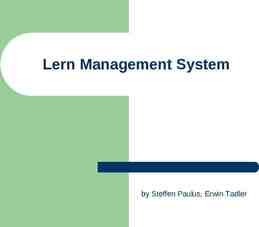The Western Genre
17 Slides2.38 MB

The Western Genre

List all the facts, ideas & things you know about the WESTERN GENRE Location, time frame, settings, plot, mood, themes, lighting, camera angles, camera movement, costumes, dialogue, staging

What is the Western Genre? One of the oldest film genres (1903), which predates film itself – The Great Train Robbery The Western genre is focused on the good guys keeping law and order within the frontier Nostalgic genre of the 1900s – Dates back to the American west, creating our historical background

History of Western Genre The era of the American West began from 1850 to the 1900s Are usually set between the American Civil war and the early 1900s Popular in the 1930s-60s, but resurged in the 1990s. Popular for how it explained the history of America/myths and how the West had culture Influenced by individualism – the

Western Settings/Costumes Settings in Western films generally include breathtaking settings and open landscapes (The Tetons and The Monument Valley) Usually takes place in the afternoon when the sun is still bright Can see lots of ranches, frontiers, cactus, and lots of wildlife Costumes usually include hats, leather boots, masks, denim jeans, guns, vests, and rope for lassoing

Western Heroes & Antiheroes Heroes usually include local lawmen or enforcement officers, ranchers, army officers, cowboys, territorial marshals, or skilled gunfighters Hero Characteristics: Masculine people of integrity and principle – courageous, moral, tough, solid and self-sufficient, independent and honorable attitude Hero could usually stand alone and face danger against protagonists (may have sidekicks)

Western Heroes & Antiheroes (cont) Codes of the Hero: Protecting good vs. evil, uphold the law, saving the innocent/those held captive, keep oaths made, helping the needy/unfortunate The antiheroes (antagonists) would usually wear black hats – black being a symbol of evil Men would mainly play the roles of the hero; trying to stop the antagonists Women are usually the housekeepers and serve as those that tend to the wounded

Western Dialogue Dialogue: Usually seen as quirky, witty, having emphasis being placed on the words, and is usually laconic (concise/brief), making it enjoyable to the audience

Western Film Plot Maintain law and order in the frontier Settlers vs the Indians Humanity vs. Nature Civilization vs. Wilderness Villains vs. Heroes Law and order vs. Anarchy Plot may be gloomy in the middle due to the antihero; usually resolved by the hero

Mood & Tone Suspenseful Gloomy Violent Dark Sometimes Happy

Types of Westerns Epic Western ‘Singing cowboy’ Western Spaghetti Western Noir Western Contemporary Western Revisionist Western Comedy Western Post-Apocalyptic Western Space Western

Film Techniques Western films tend to have distinct cinematography and editing

Film Editing Techniques 1. Early films included title cards and ellipses

Film Techniques 2. Dramatic Lighting was crucial to dramatic films/humorous films

Film Techniques 3. Serious western films that had conflict and violence used plenty of low-key lighting to emphasize the characters and the surrounding landscape

Film Techniques 4. Used camera techniques like zoom shots and panning for fight/gun scenes The OK Corral

Film Techniques 5. Crosscutting for chase scenes Inception - cross cut





